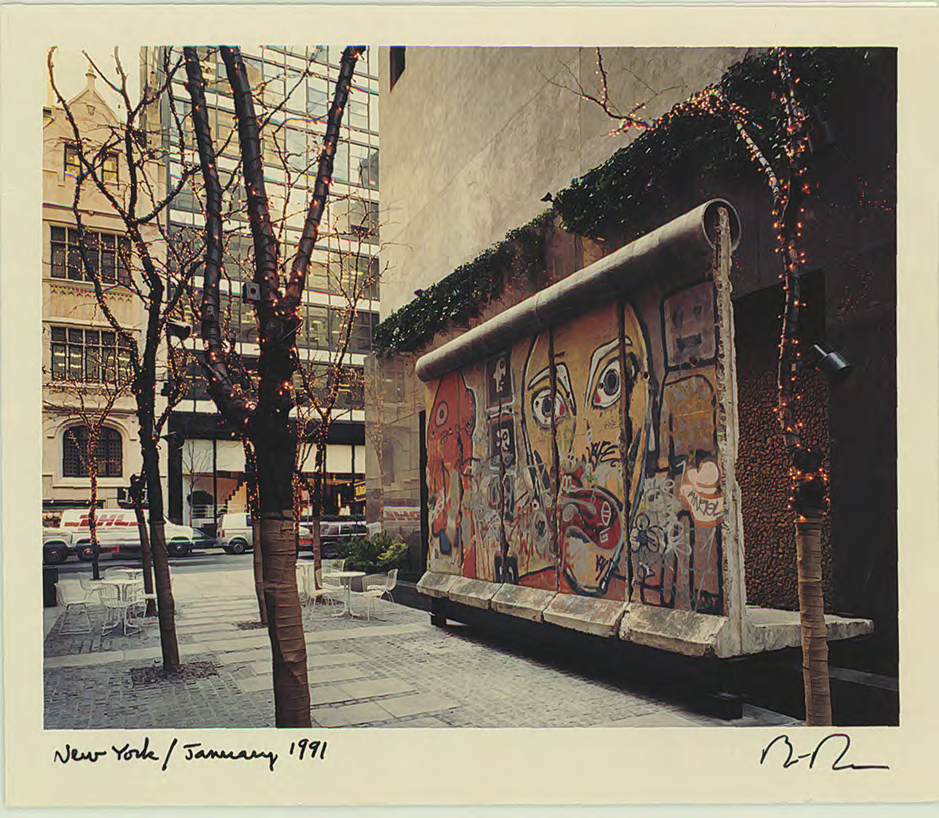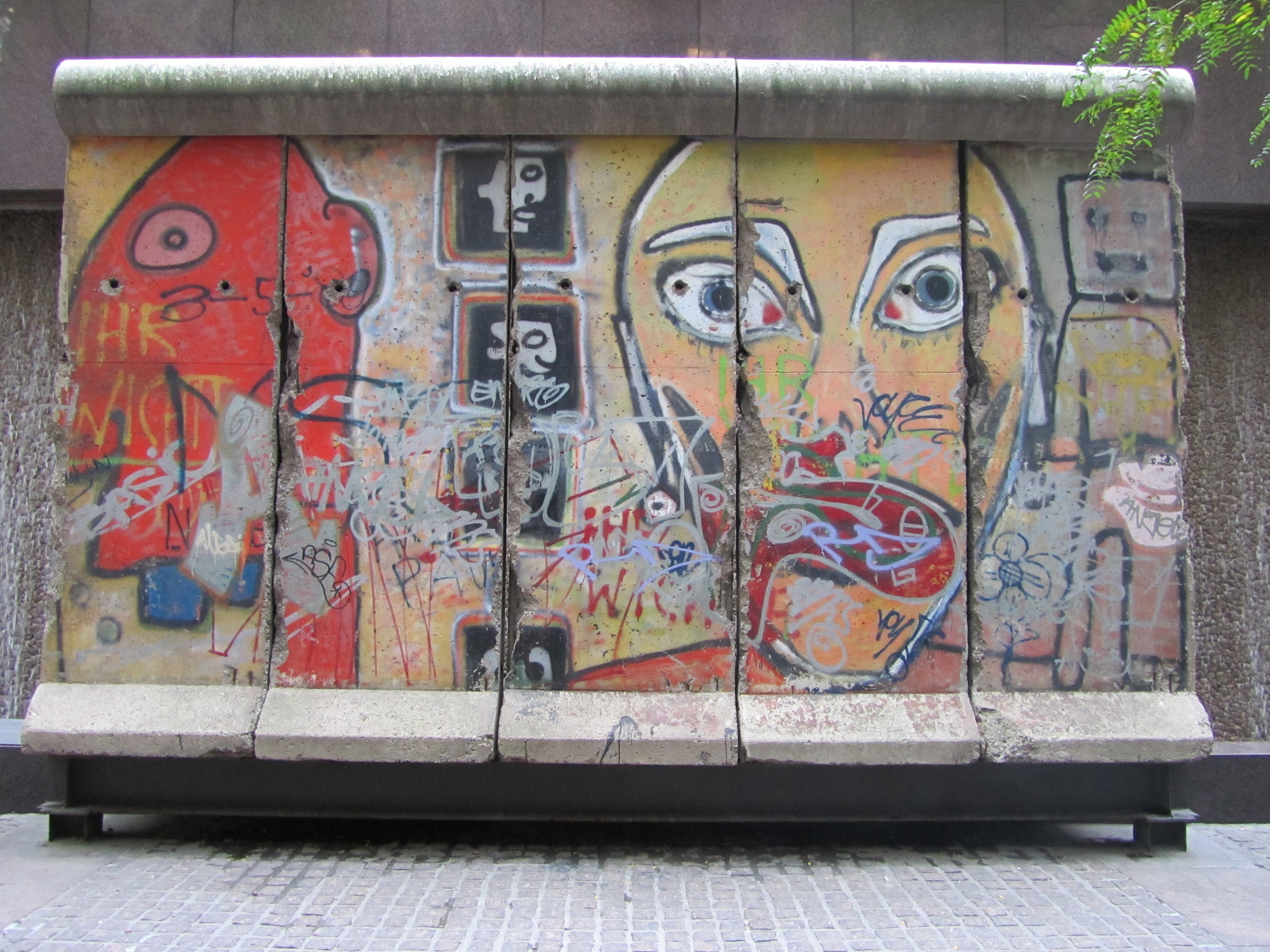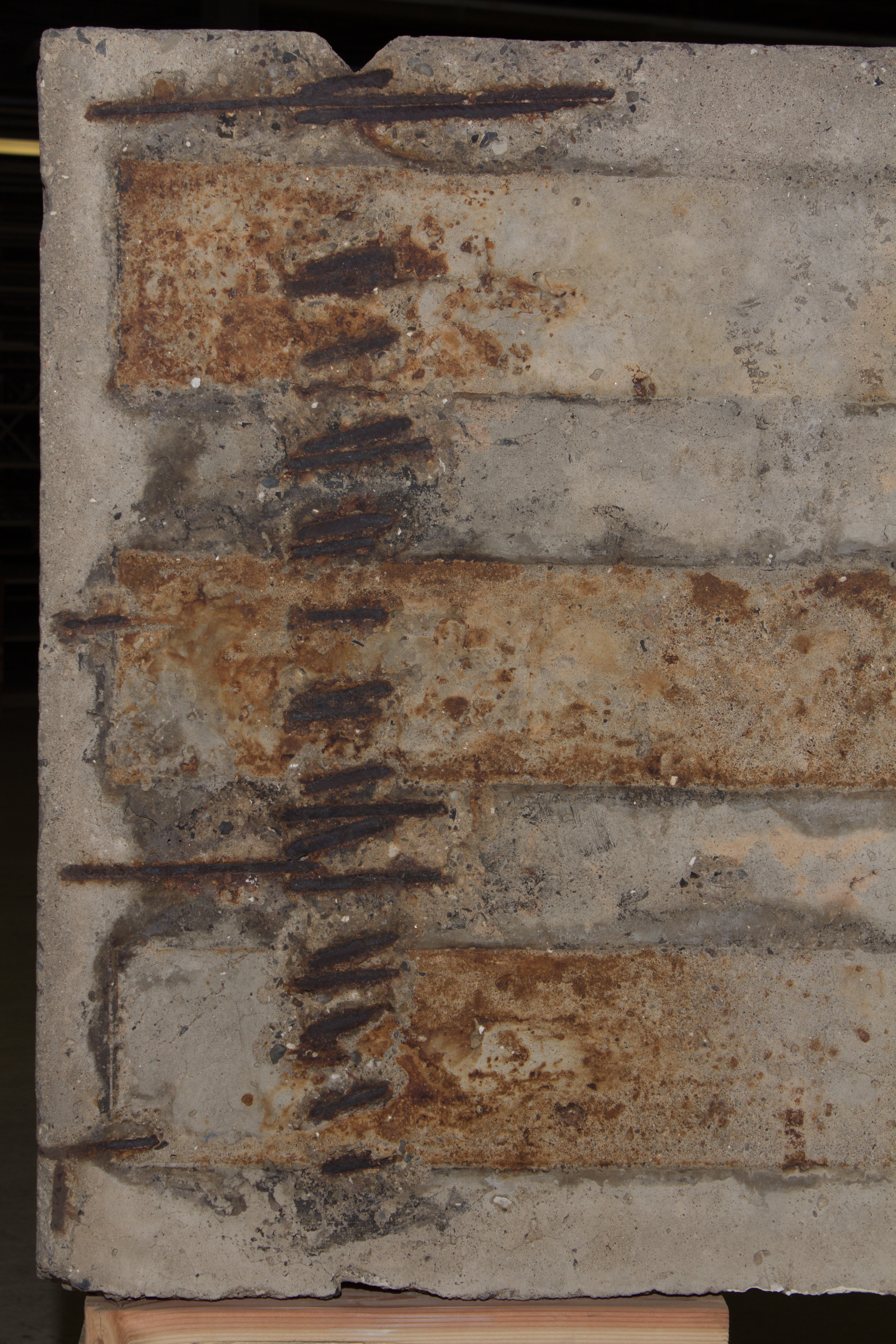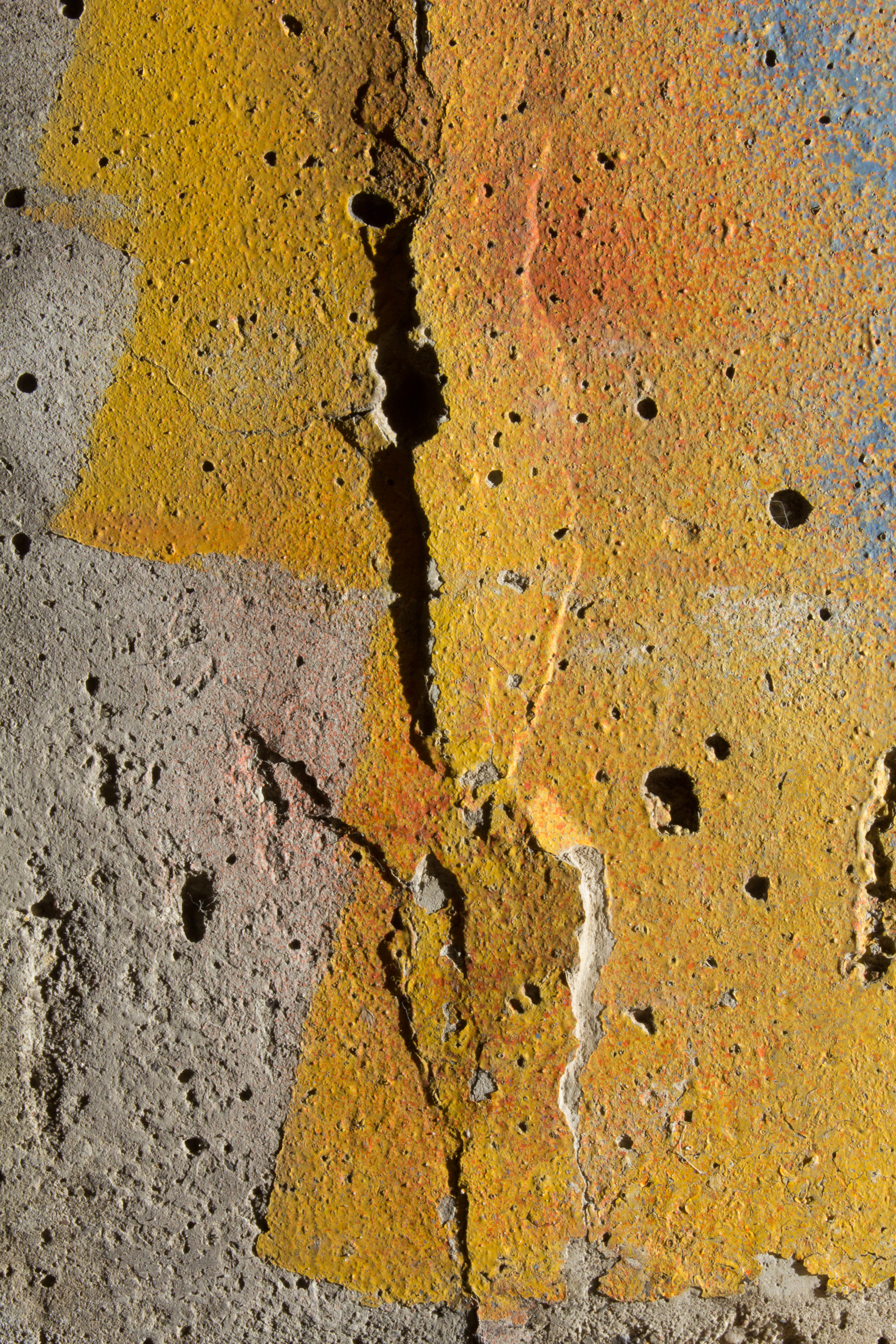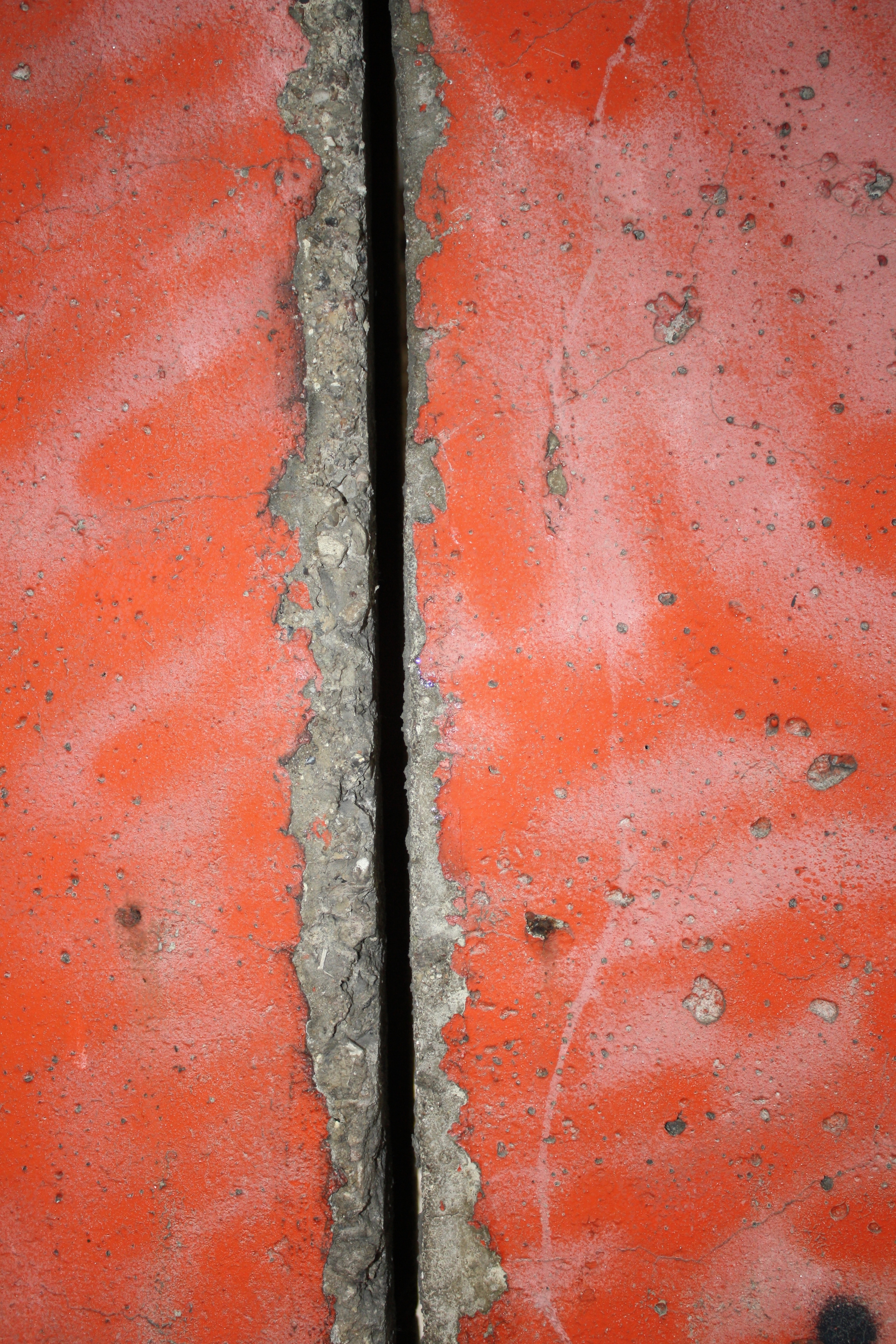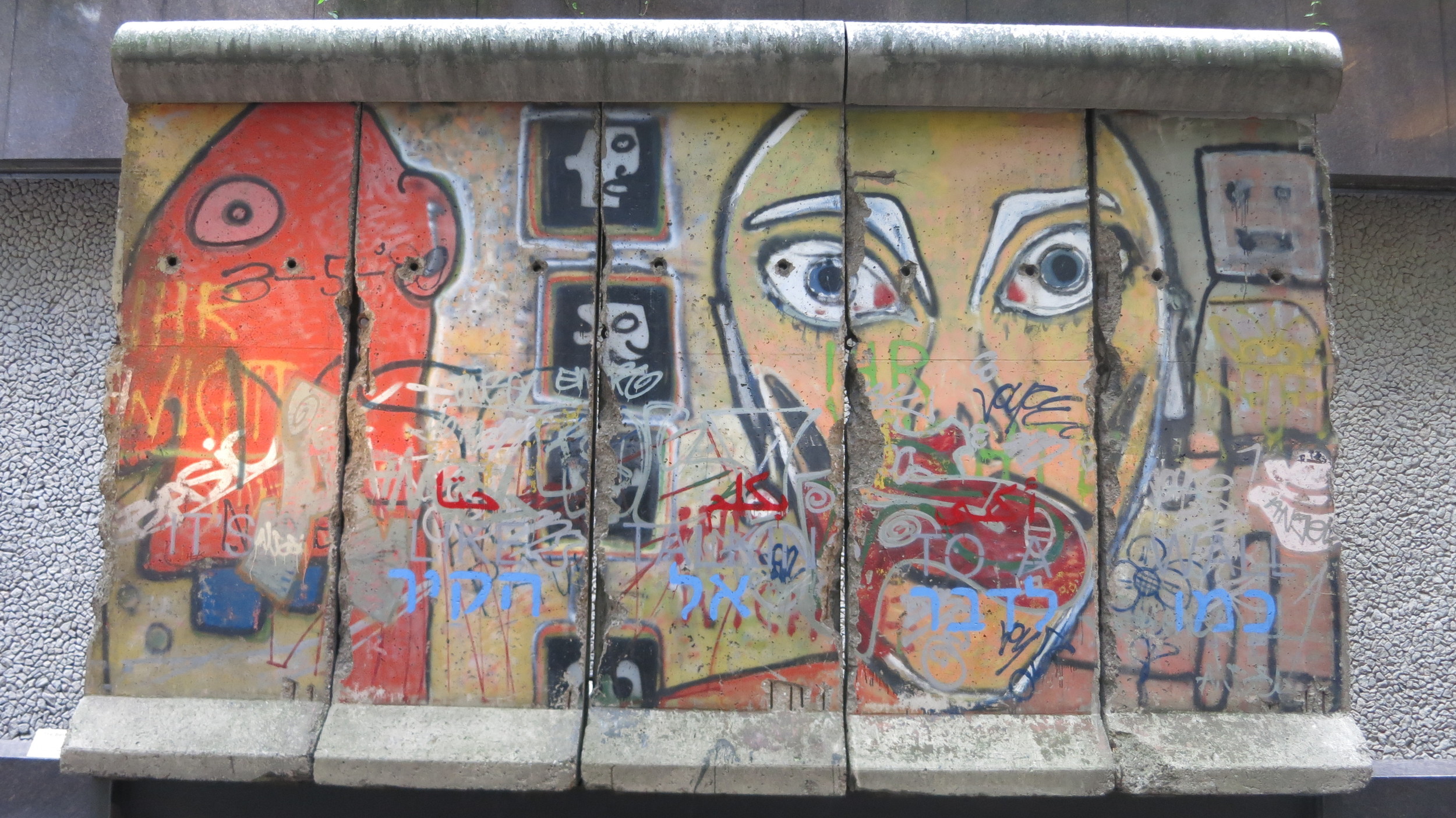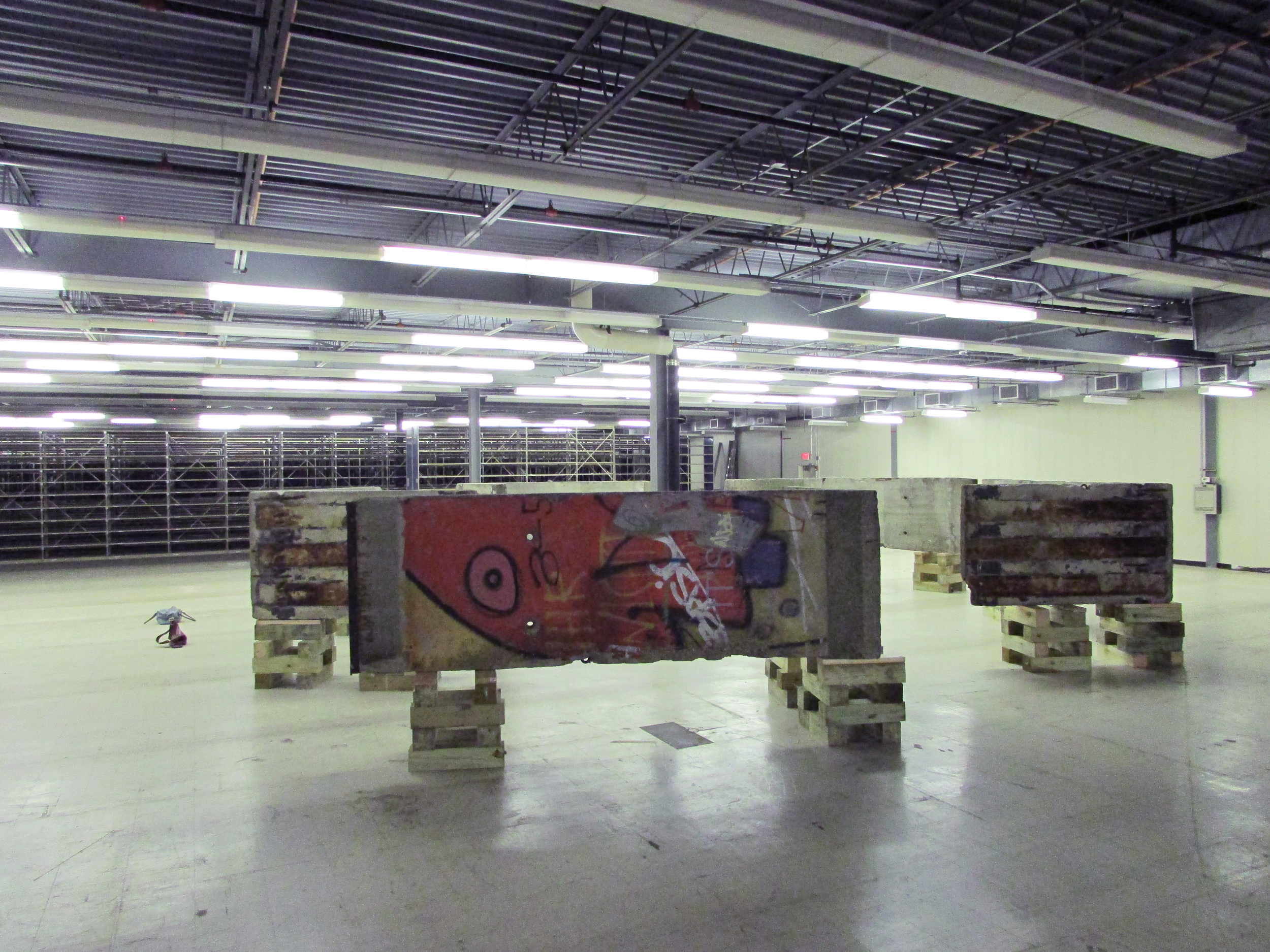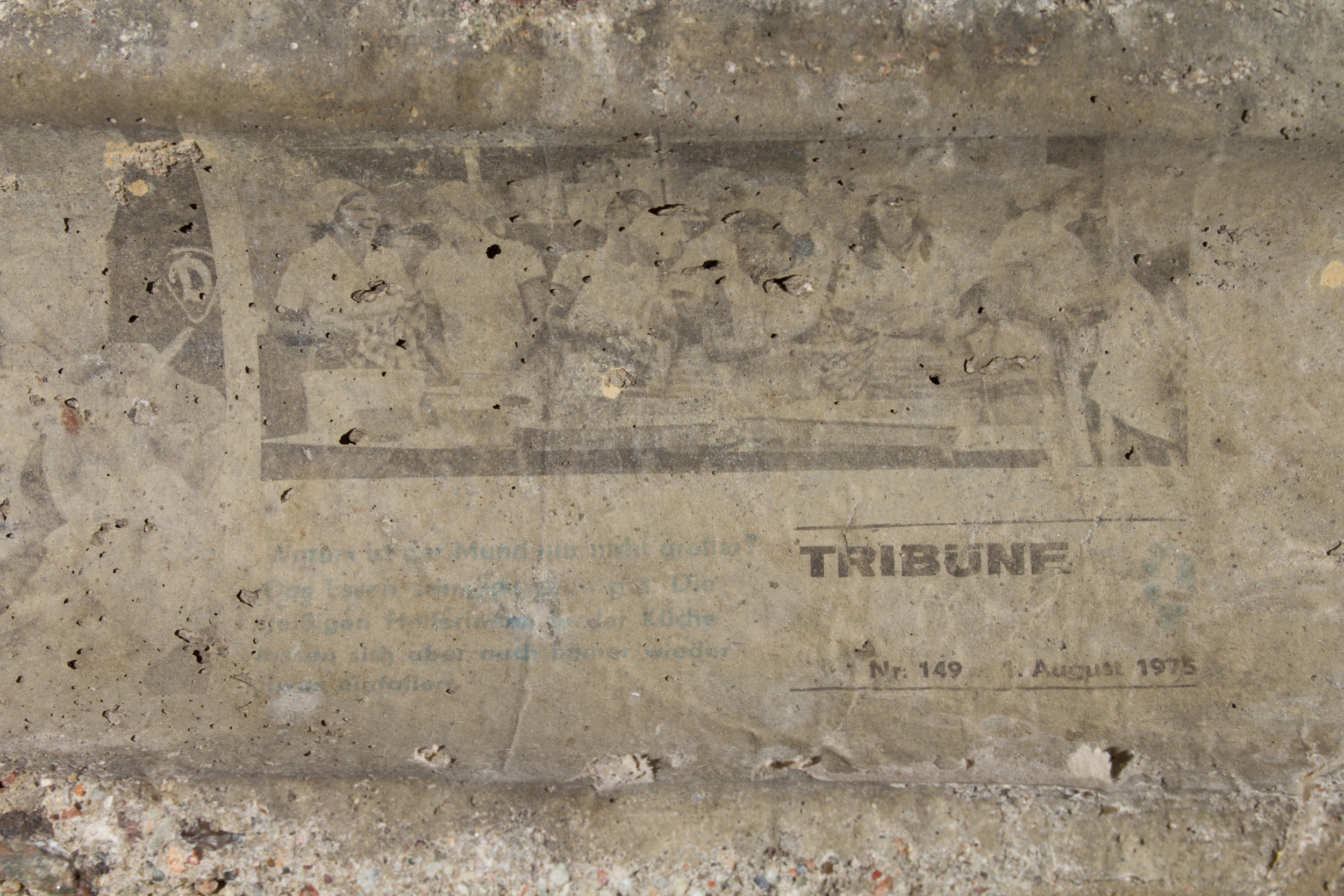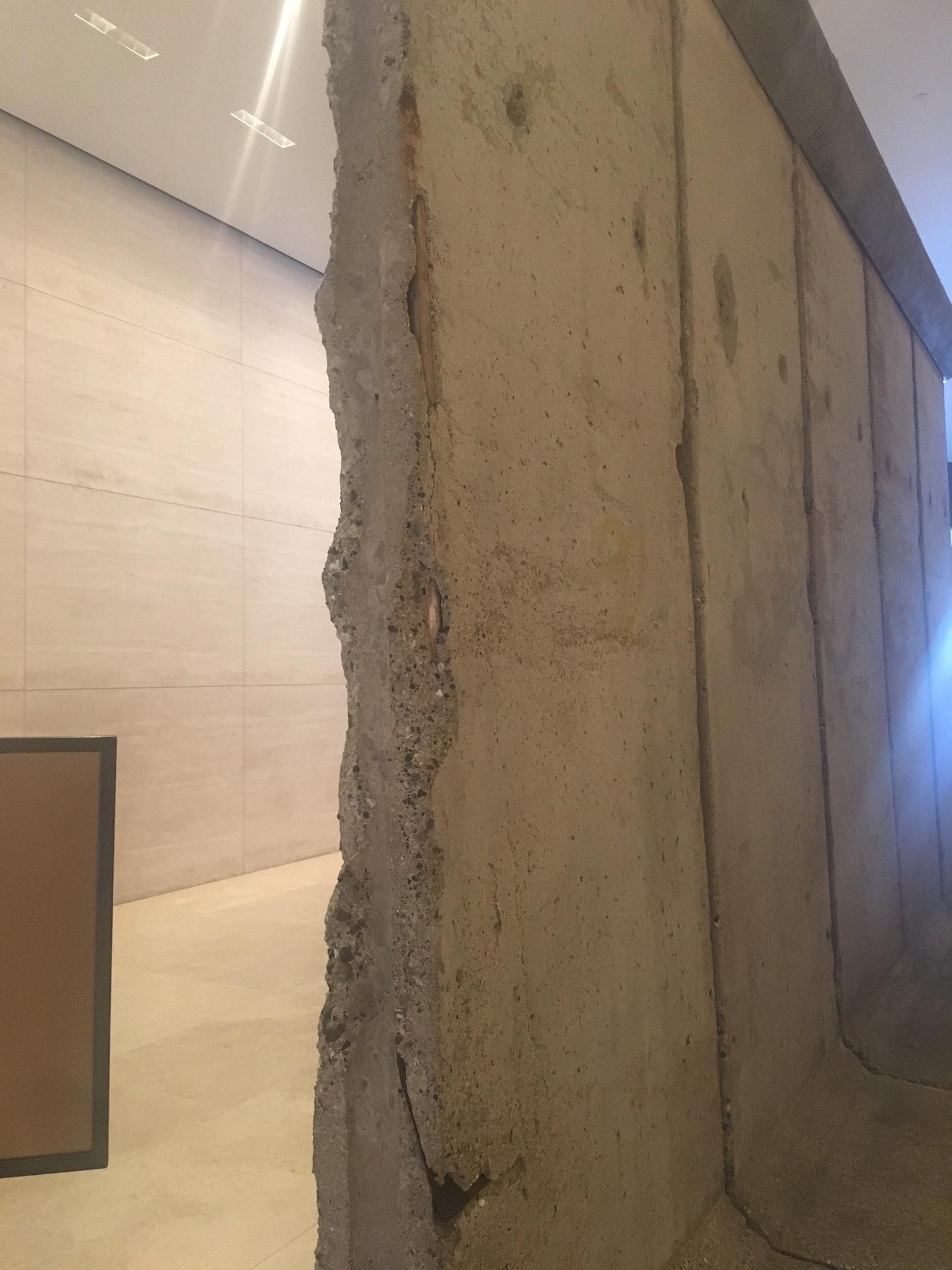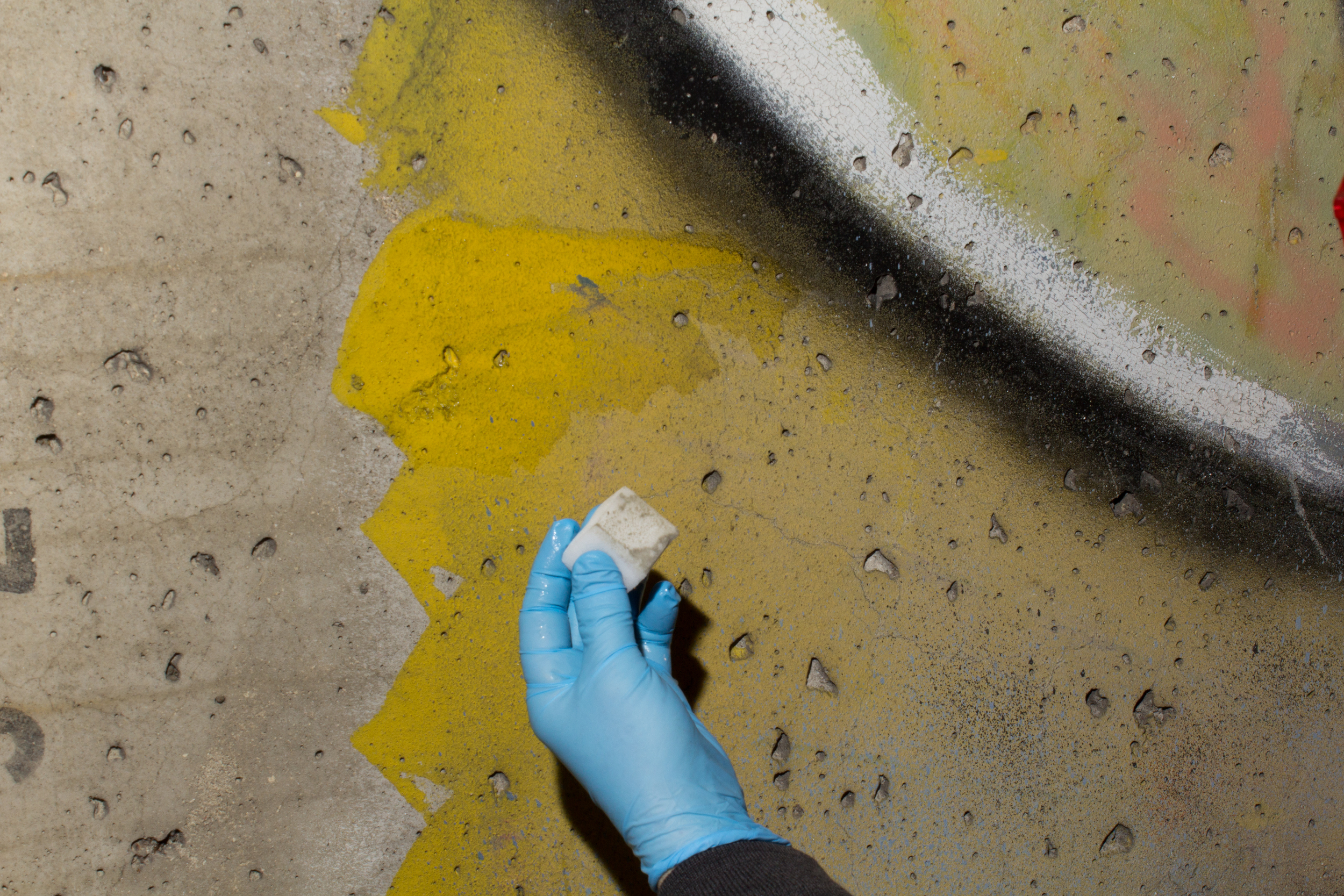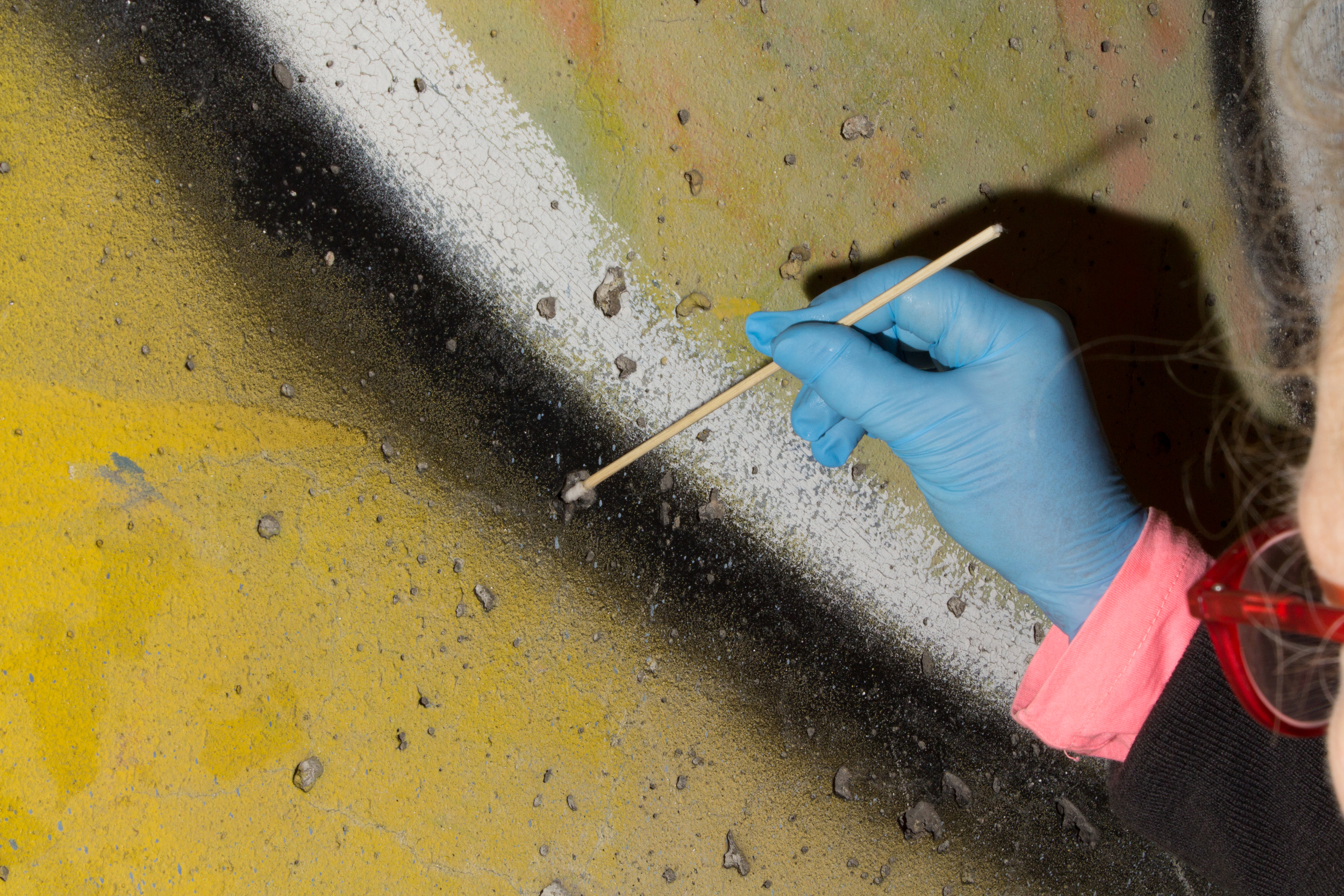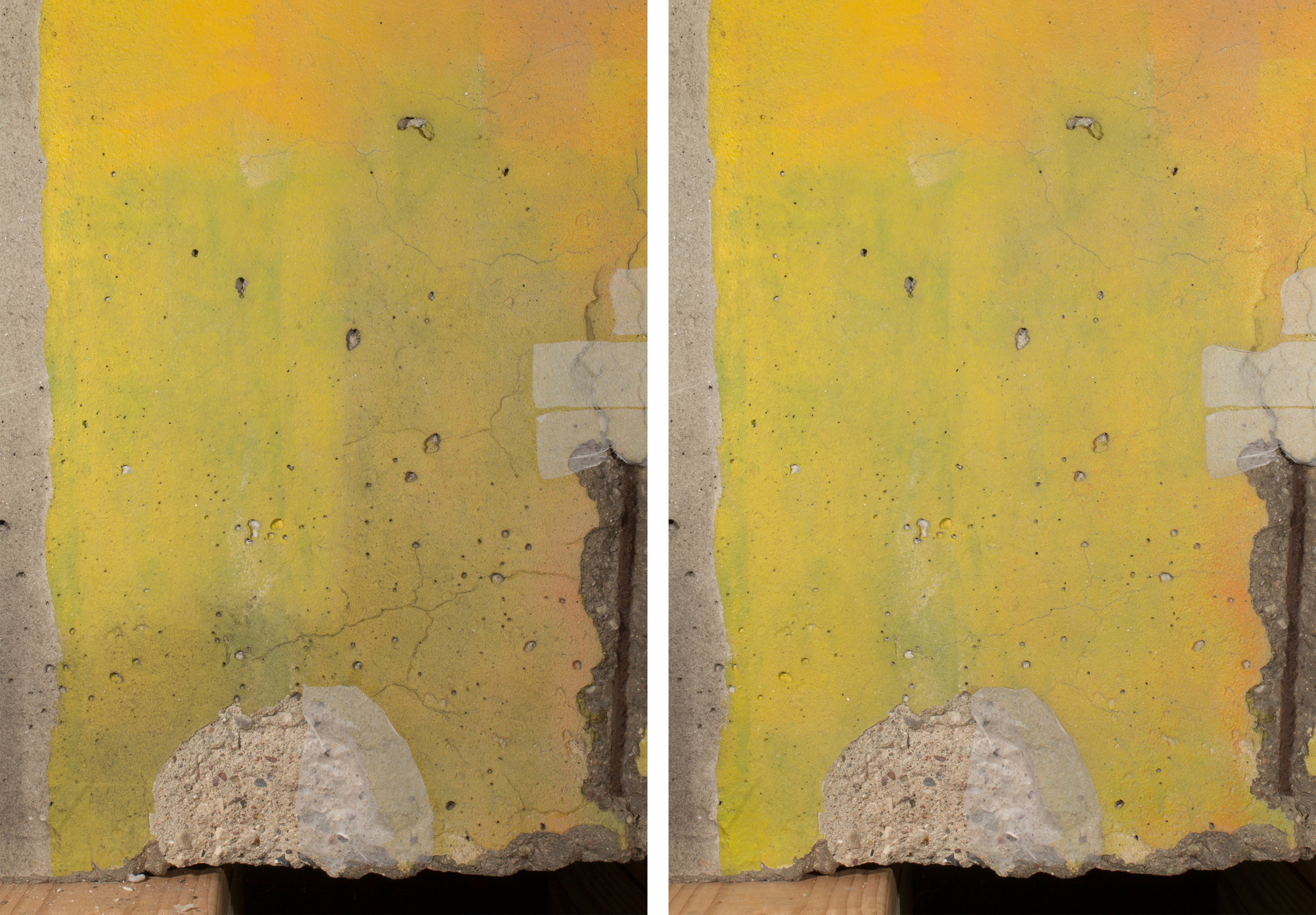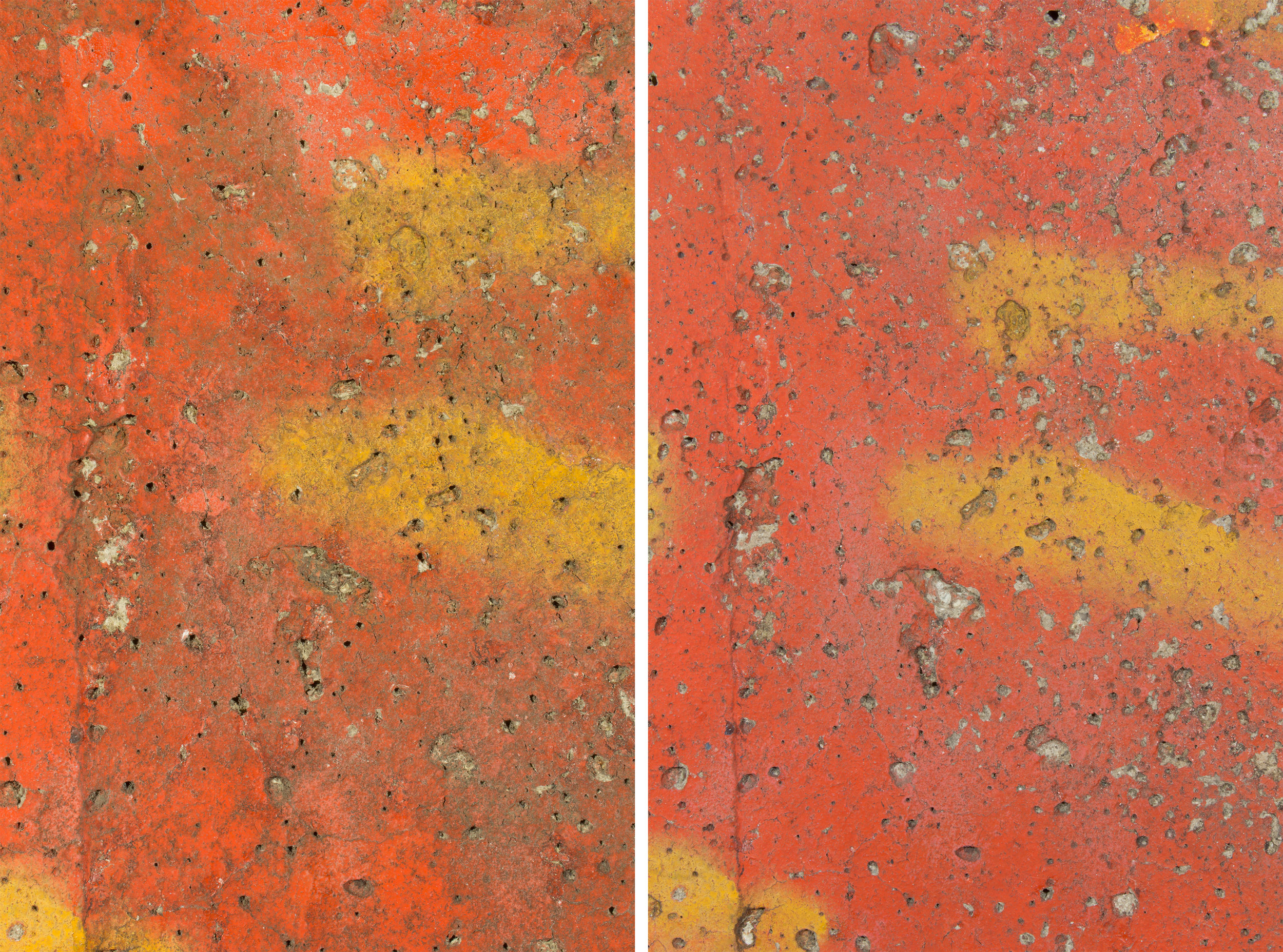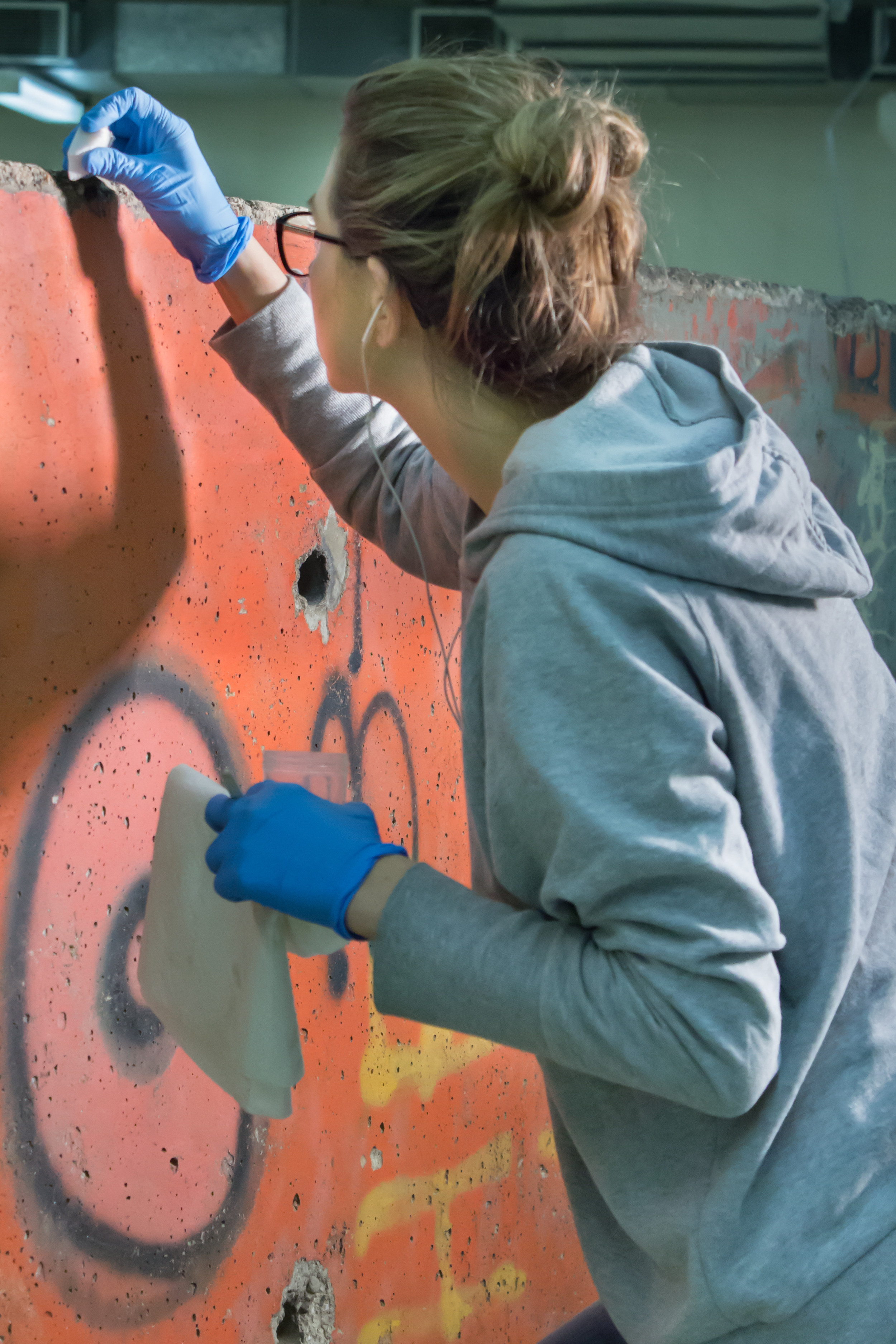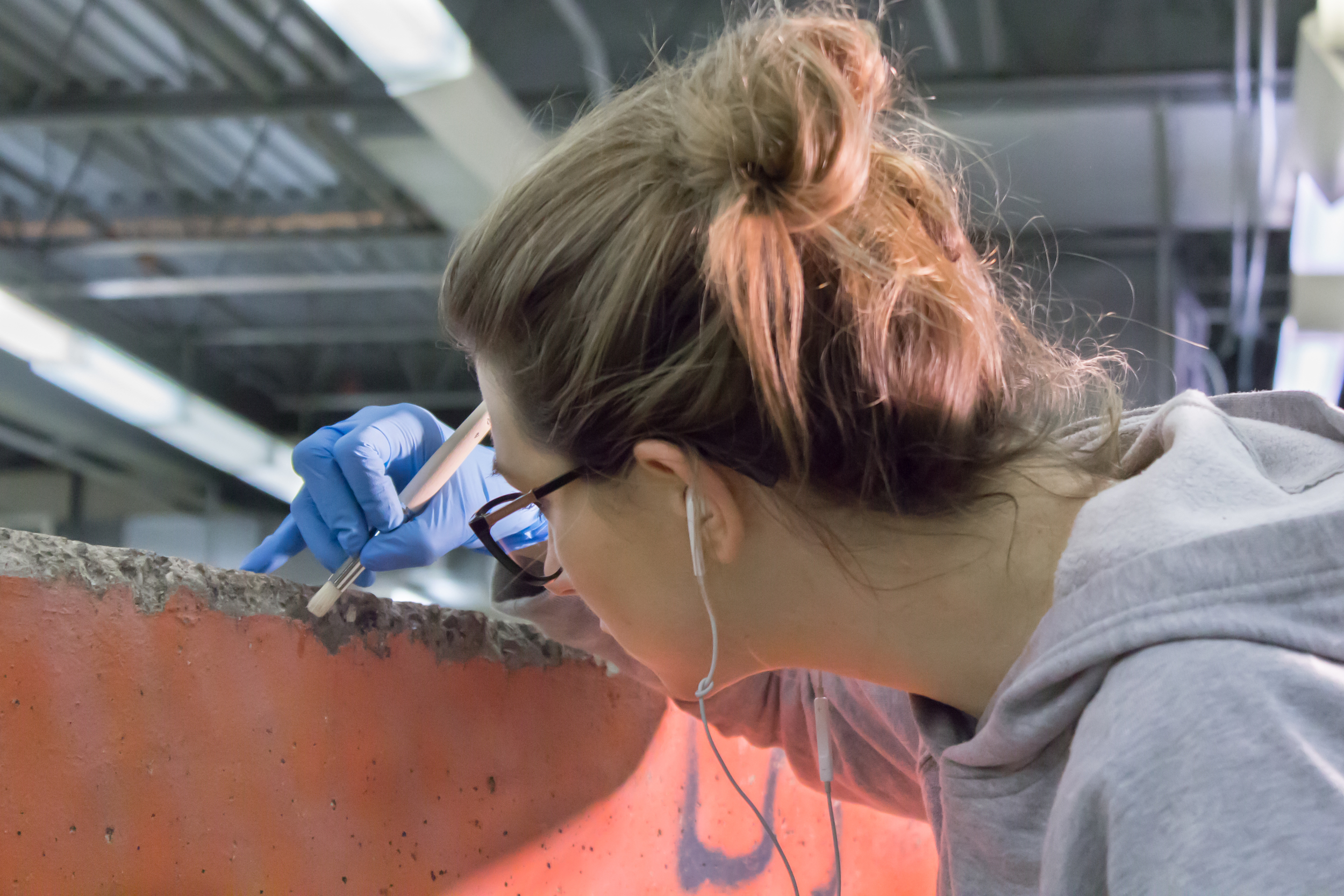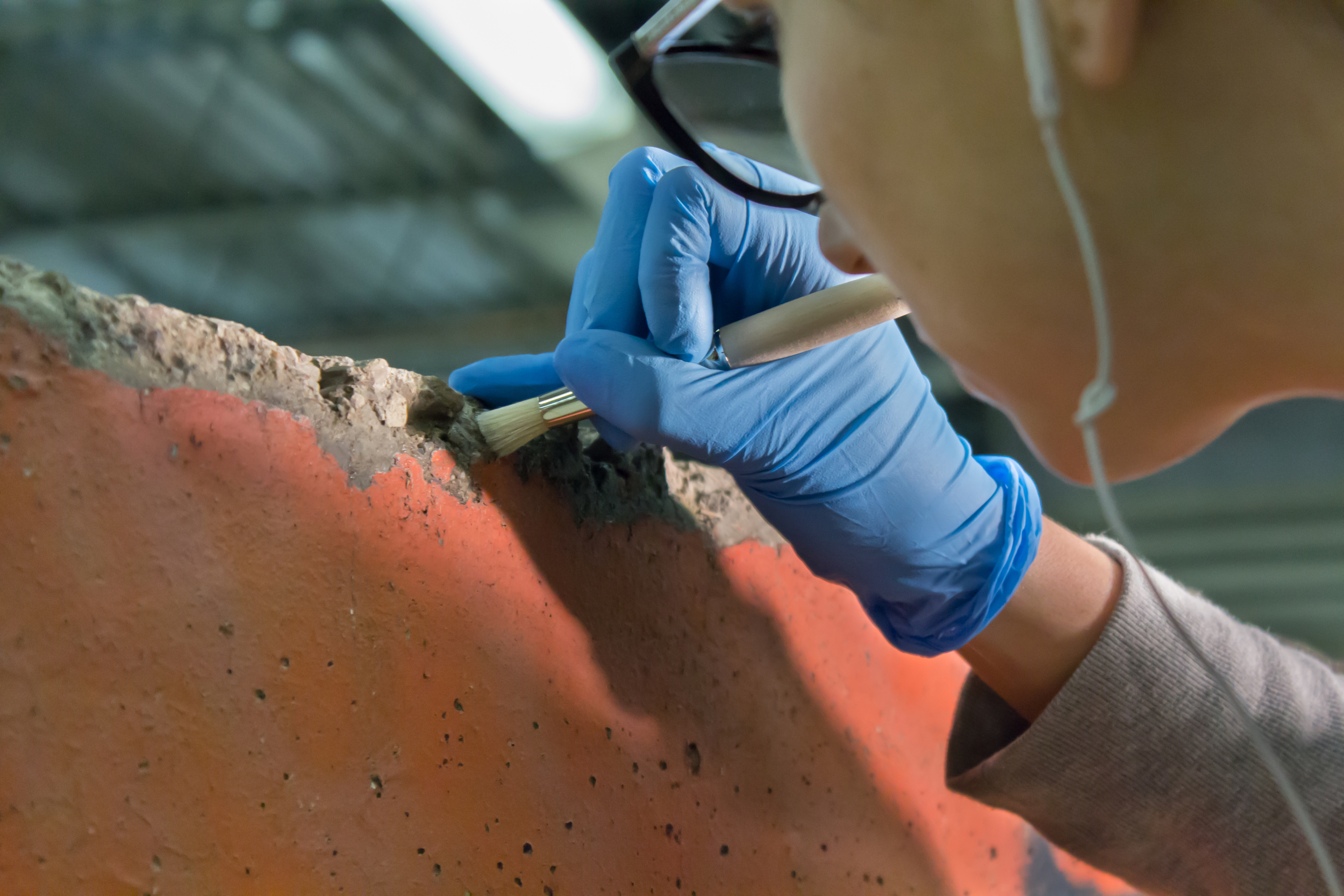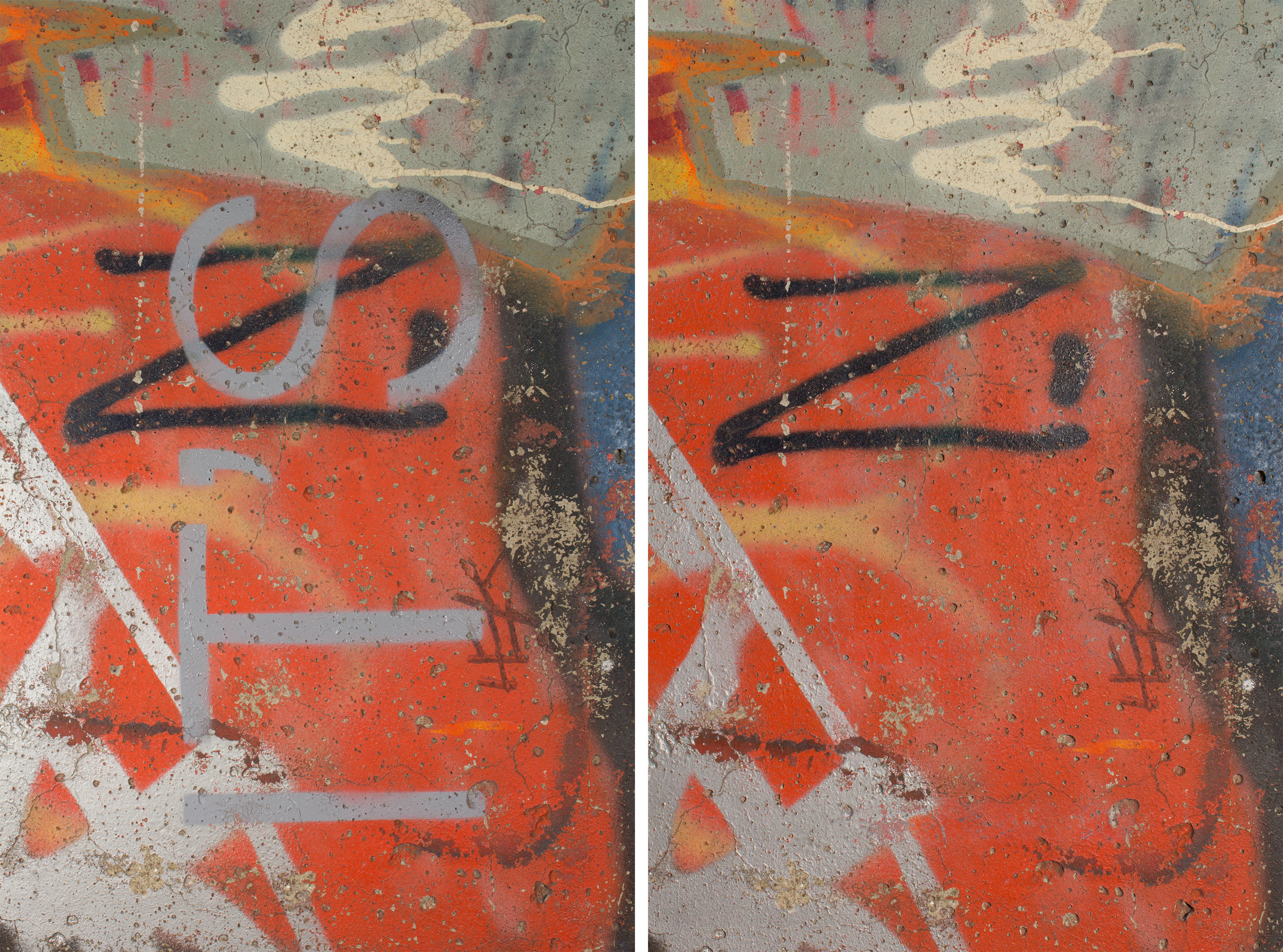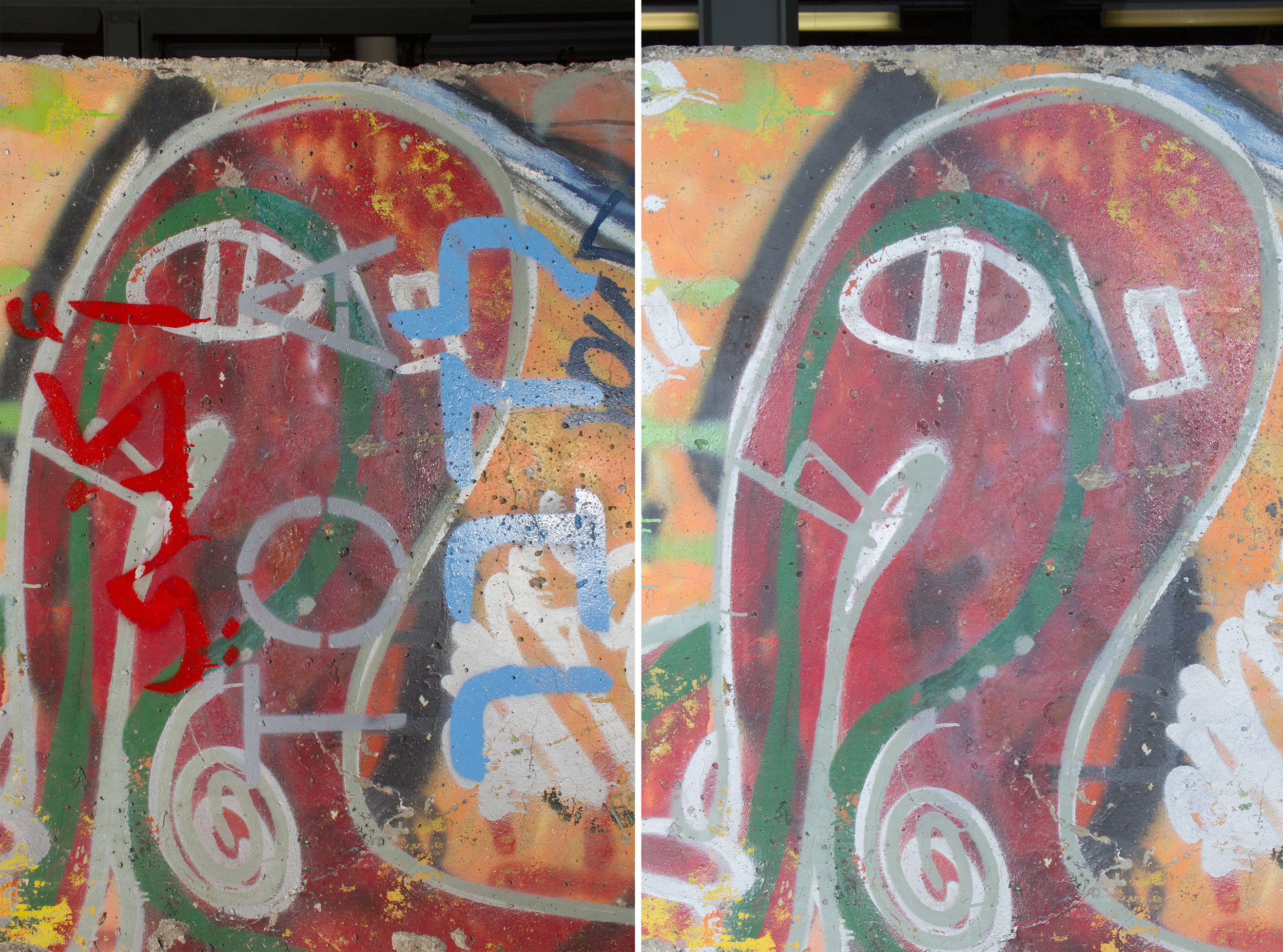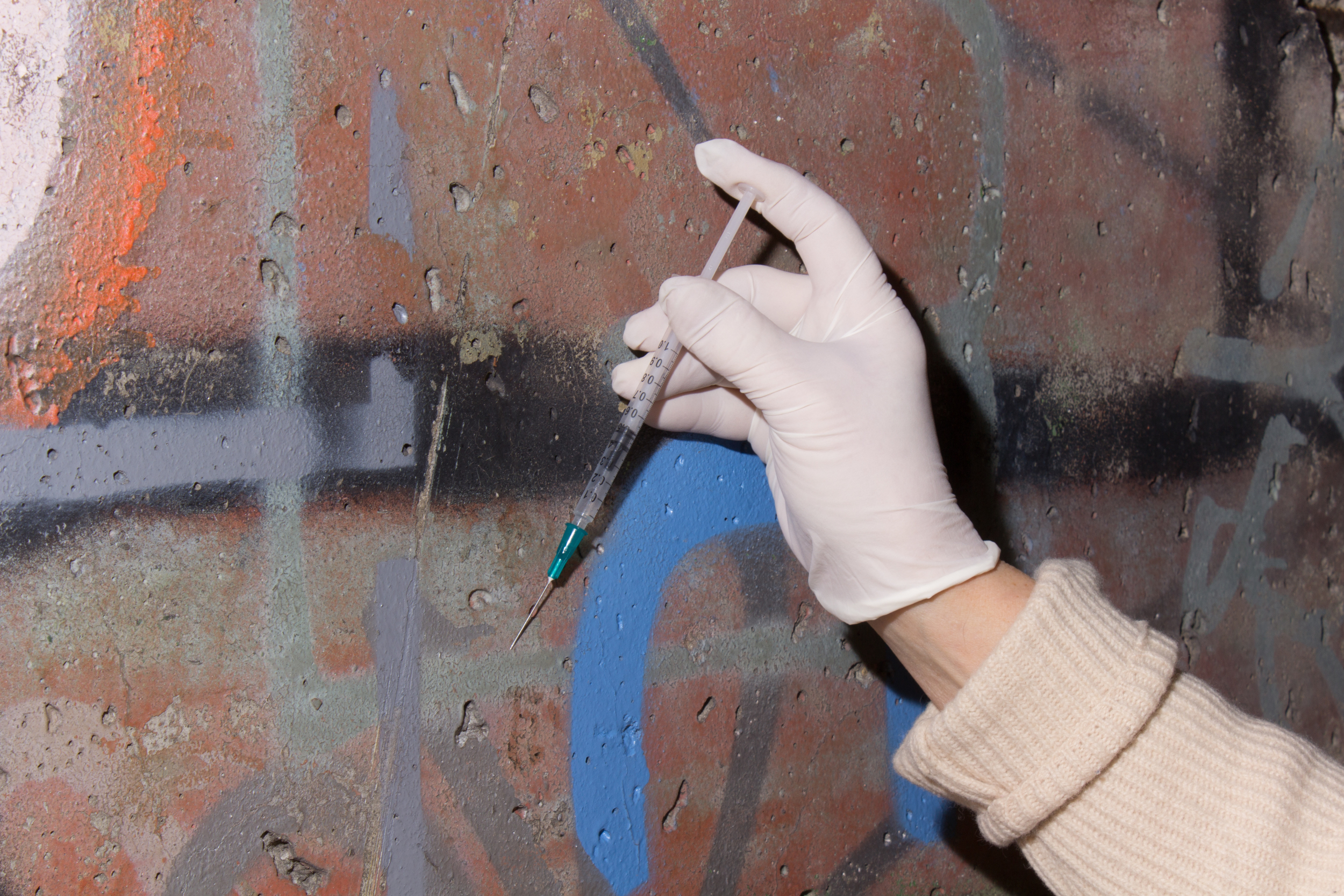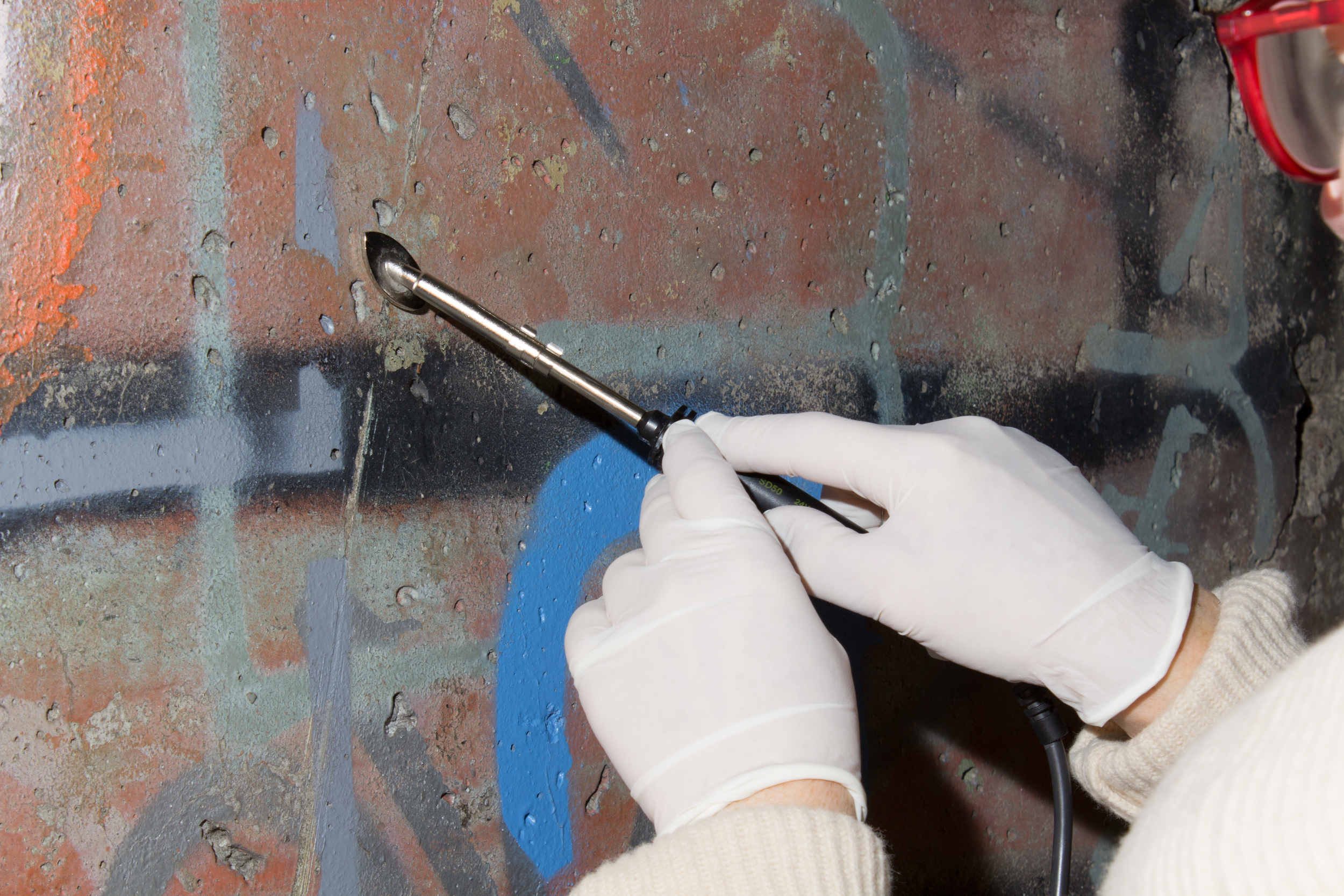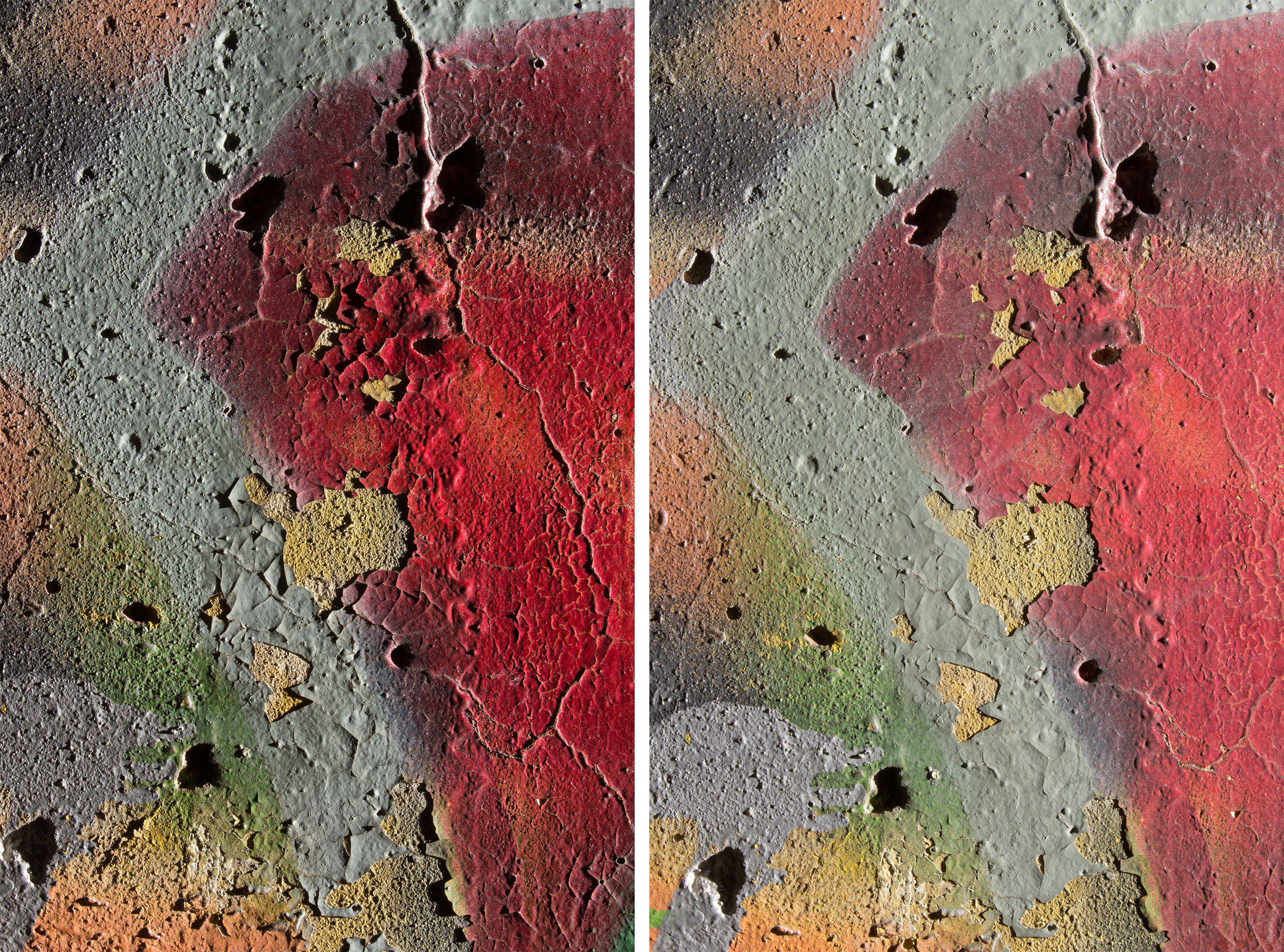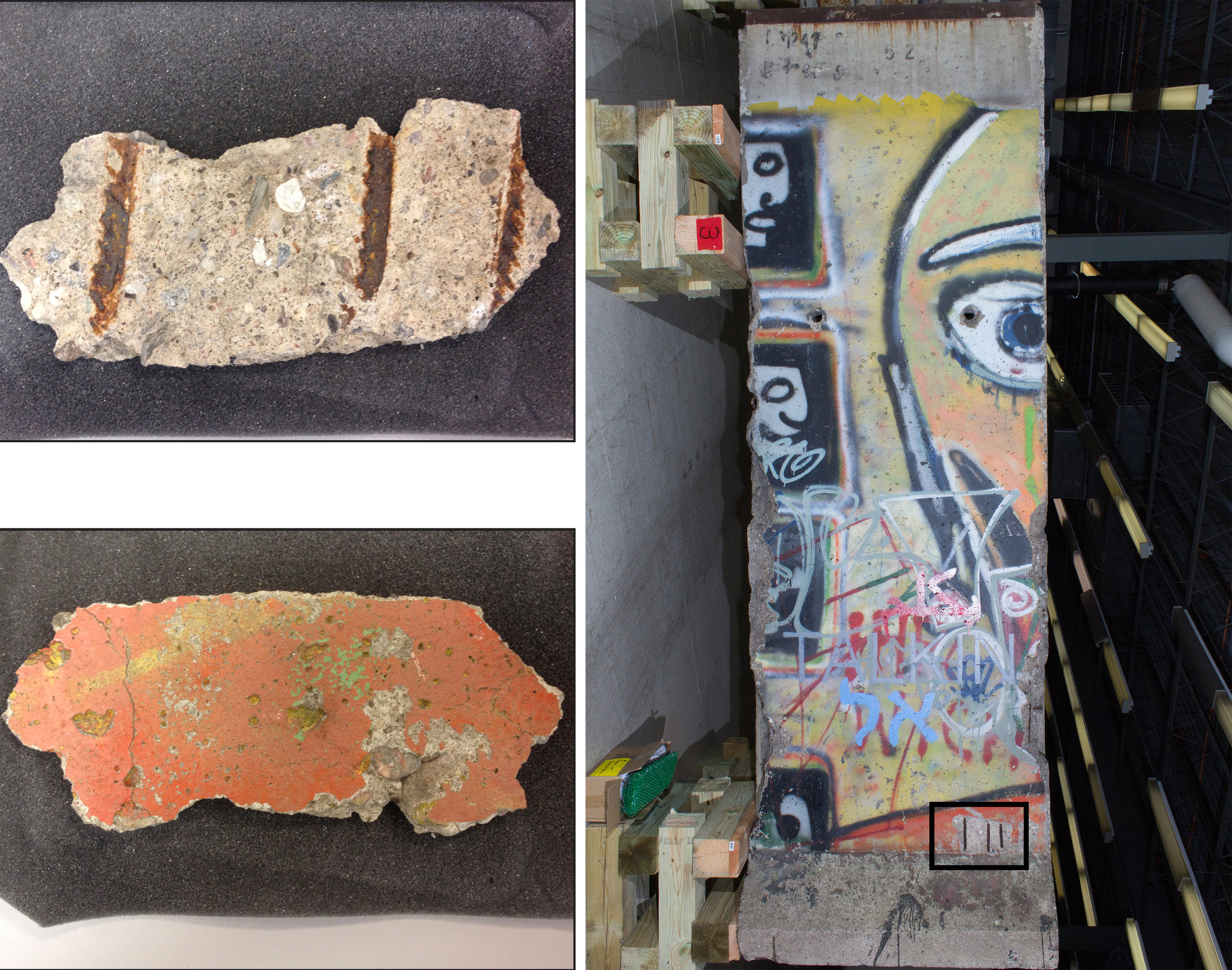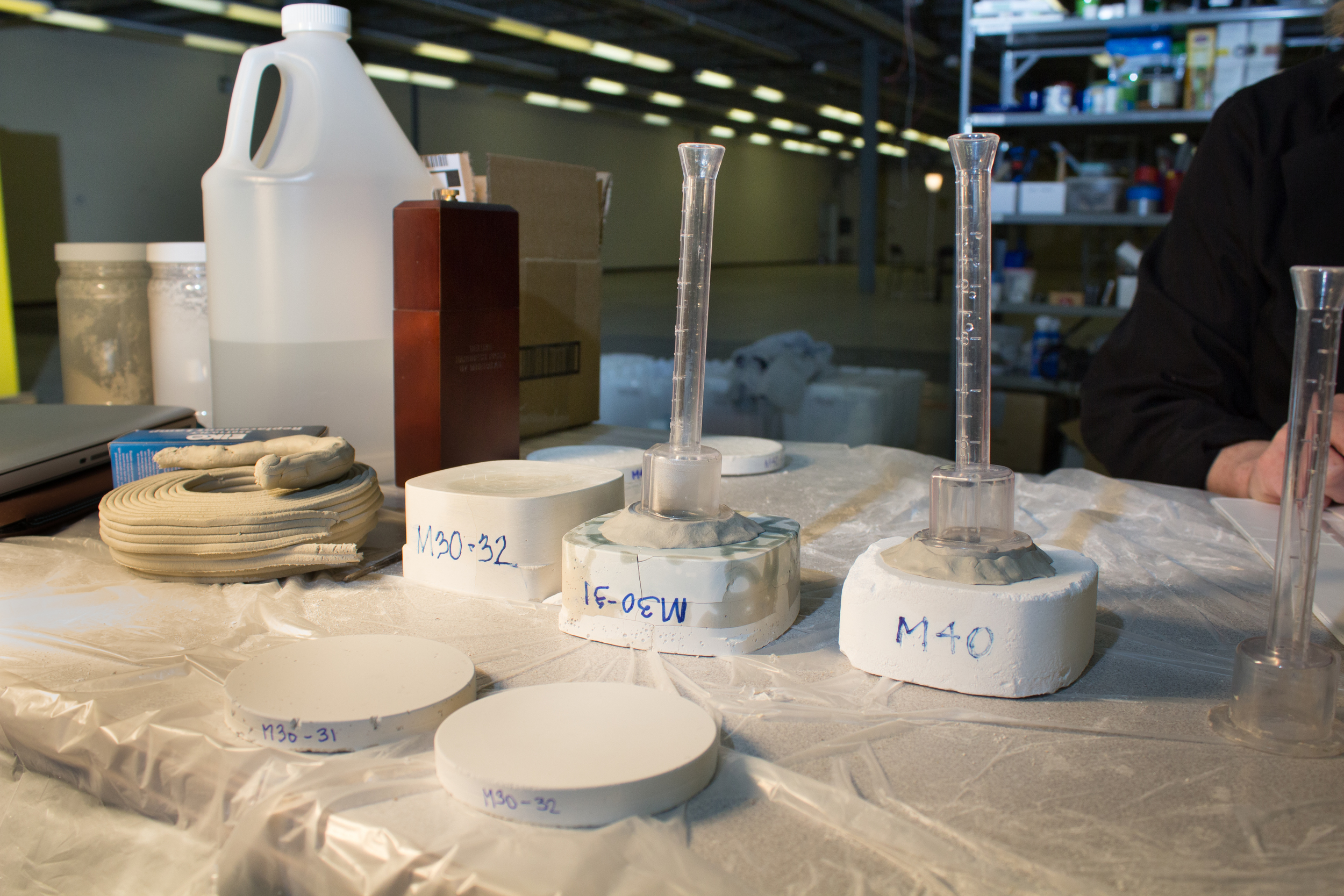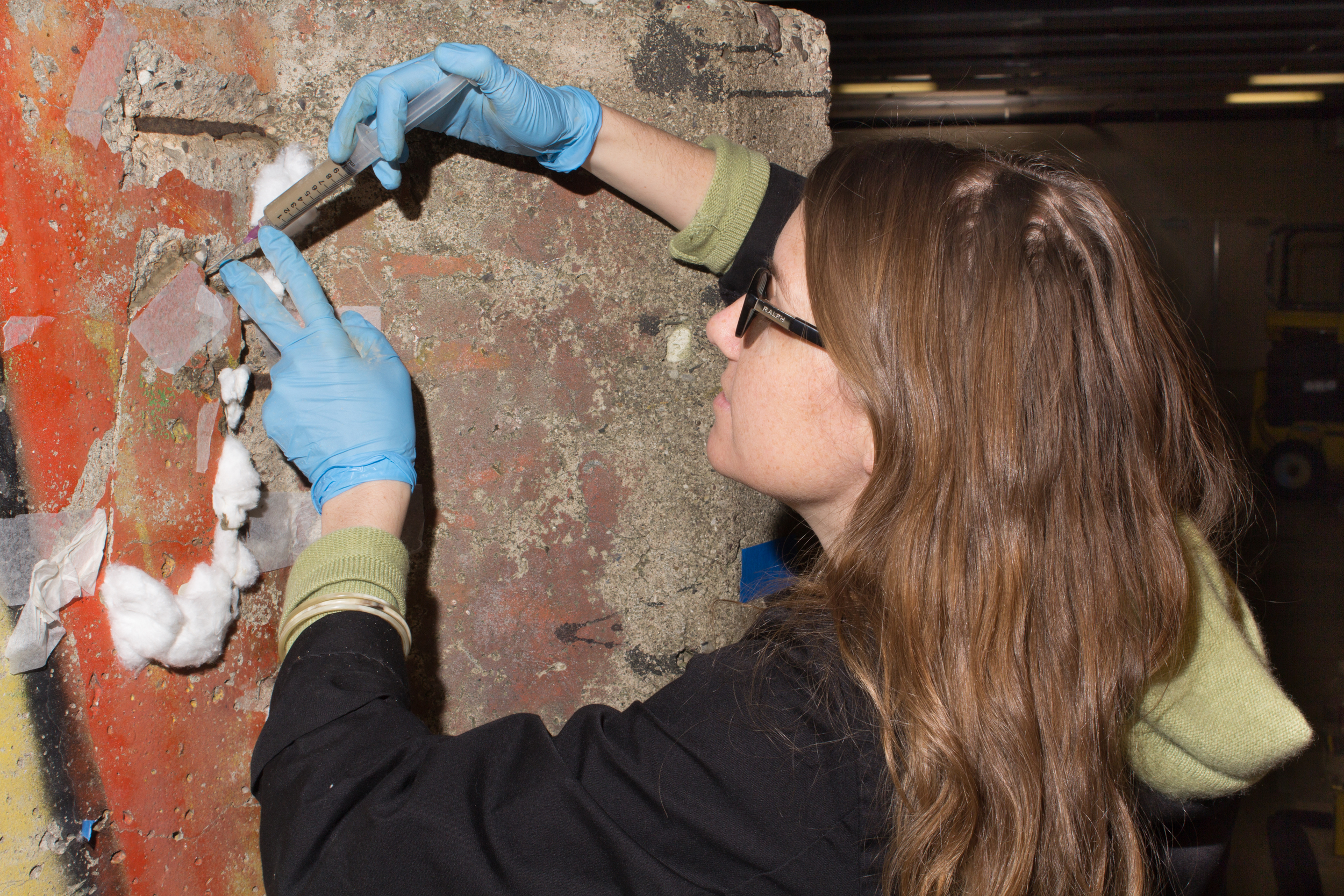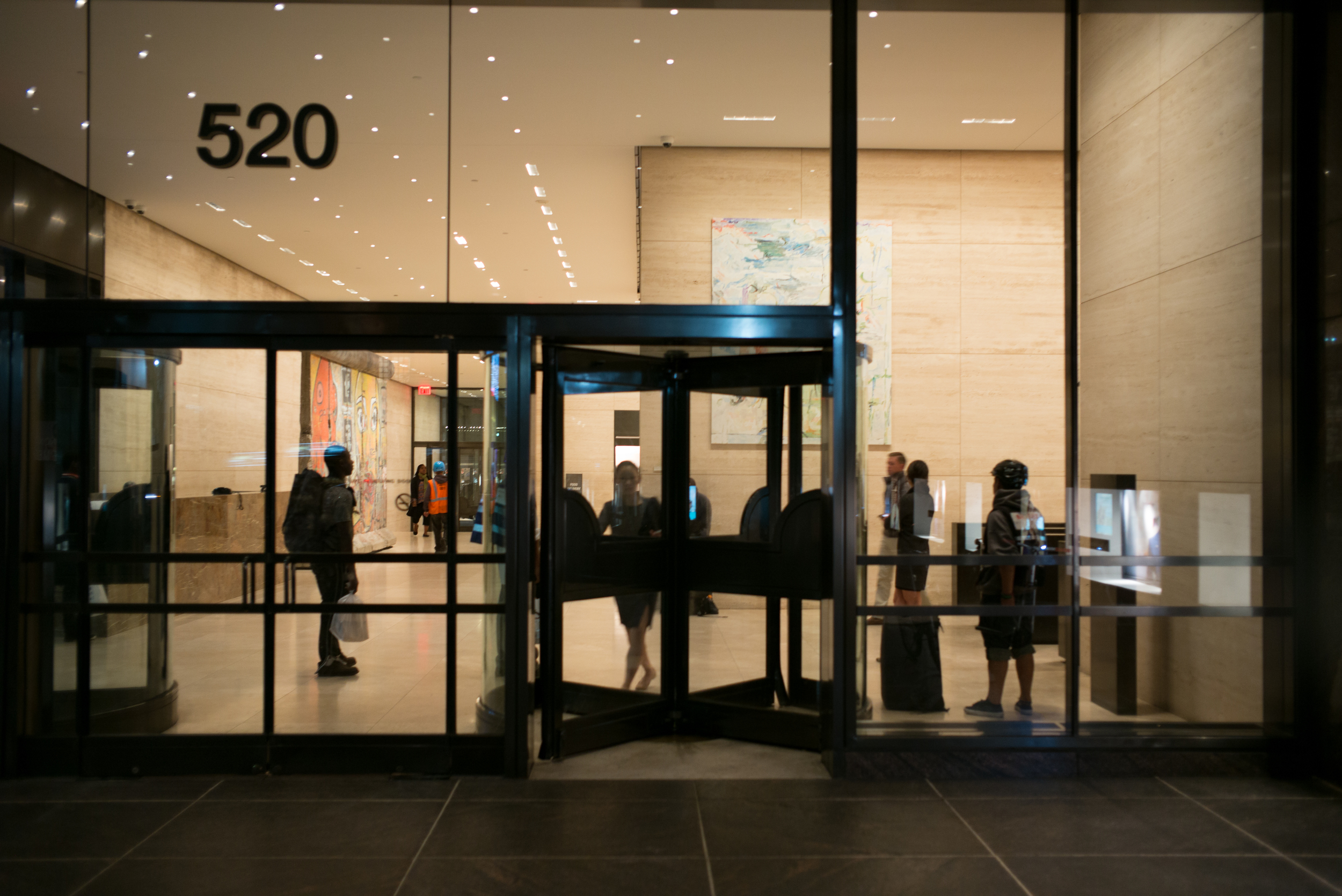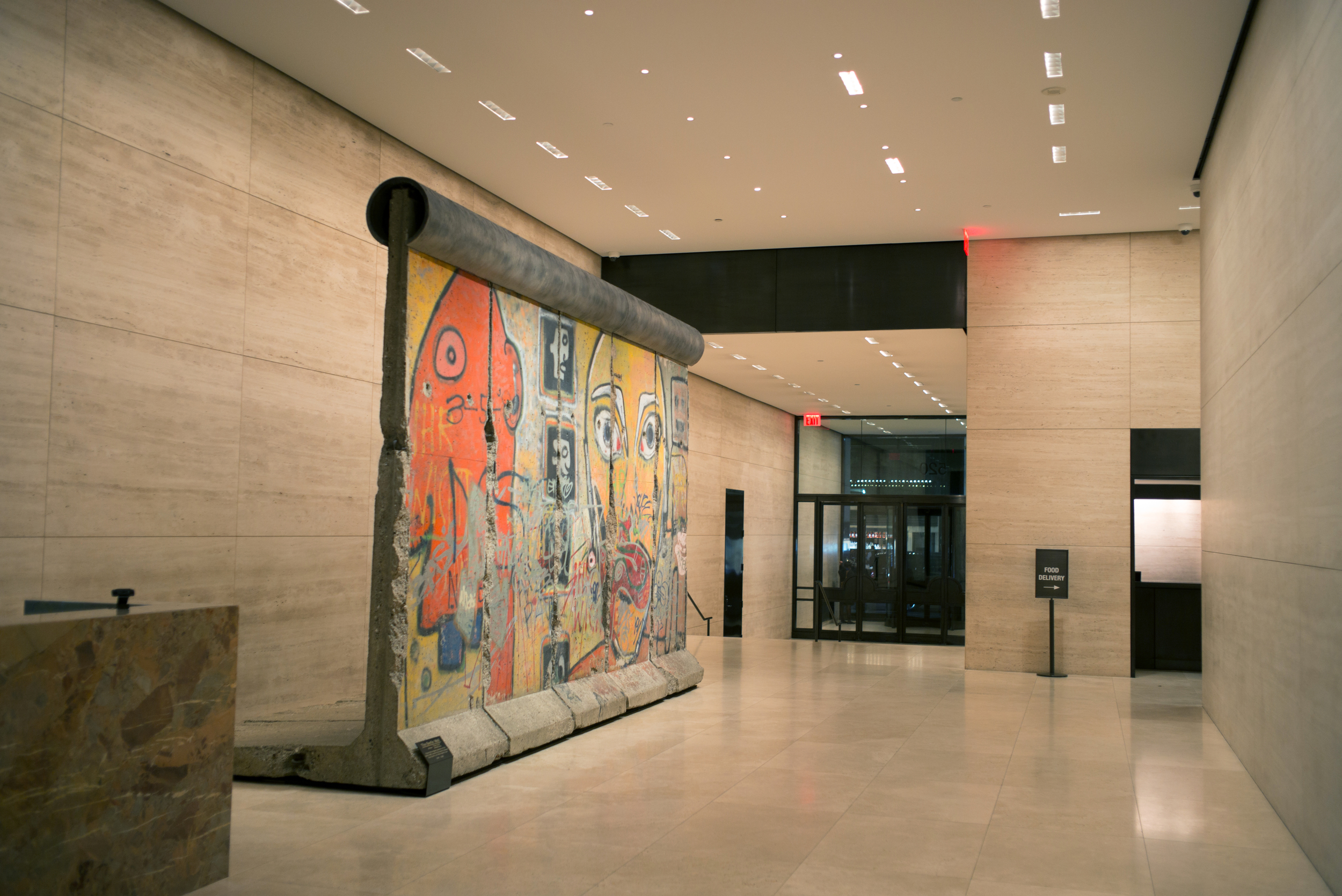The Berlin wall
The Berlin Wall project focused on the conservation of five vibrantly painted segments, designated as segments 92-96. Built between 1975 and 1980 as part of the “forth generation” Berlin Wall, they were originally located along Waldemarstrasse in West Berlin, Germany. Each segment is 3.6 m high by 1.2 m wide and constructed with poured concrete, reinforced with industrial quantities of internal steel rebar and originally capped with large sections of sewage pipe. The paintings were executed with aerosol paint sometime between 1984 and 1985. The main figurative scenes were painted by Theirry Noir and Kiddy Citny. Overtop of both artists' paintings are additional "original" tags and text-based graffiti by at least 14 - 17 others.
In the early 1990s after the fall of the Wall, segments 92–96 were purchased at auction by a private collector, shipped to the United States and installed in the small courtyard of a skyscraper on Madison Avenue in midtown Manhattan, NY. The segments were intentionally made accessible to the public and, with aesthetics in mind, positioned in front of an urban waterfall. Wetting and drying cycles induced by the water feature, in conjunction with Manhattan’s harsh outdoor environment, led to severe deterioration of the mural. This included cracking, delamination and losses in the concrete support, corrosion of the internal rebar, and flaking and loss of the paint layers. Additionally, in an isolated incident, the Wall was vandalized with spray paint through stencil. In 2014, Kiernan Graves and Katey Corda, leading a team of conservators, began treatment to stabilize the mural and remove the recent graffiti.
Following completion of conservation, the segments were reinstalled inside 520 Madison Avenue, rather than to their previous outdoor location. An indoor, climate-control environment, in conjunction with the correct monitoring and maintenance, will protect the Wall from liquid moisture and freeze/thaw cycles, thus greatly mitigating deterioration. Additionally, it will offer greater security, helping to protect against vandalism and mechanical damage. Finally, it alleviates the need for far more invasive measures such as cathodic protection or coating applications, which would otherwise demand consideration.
